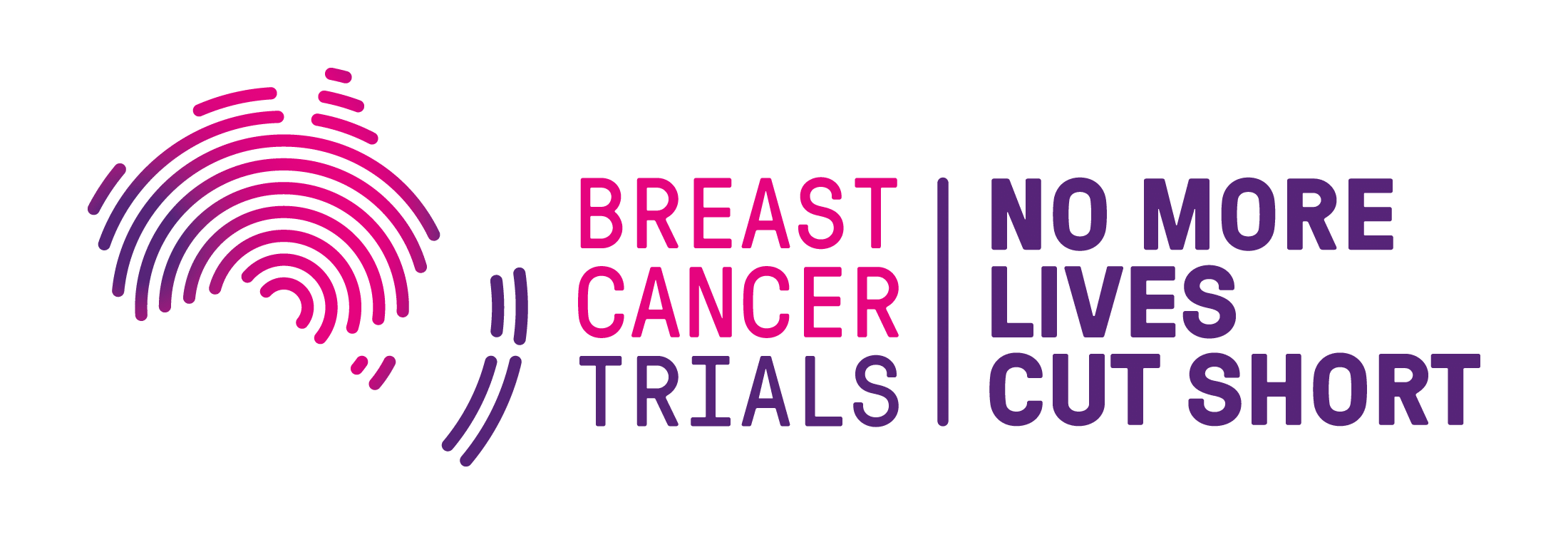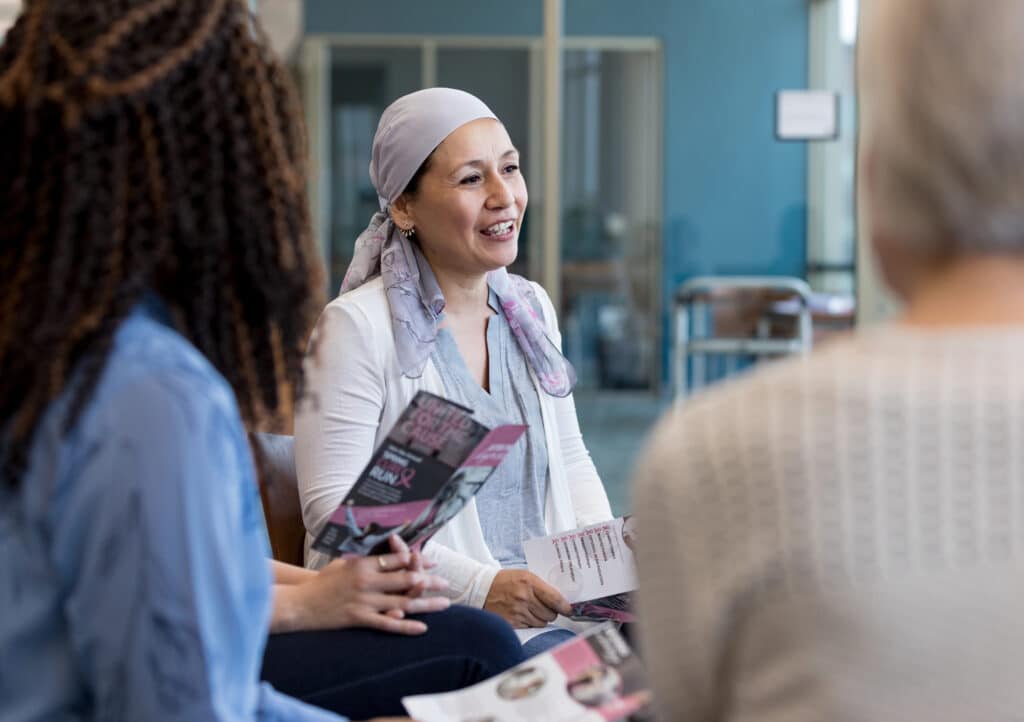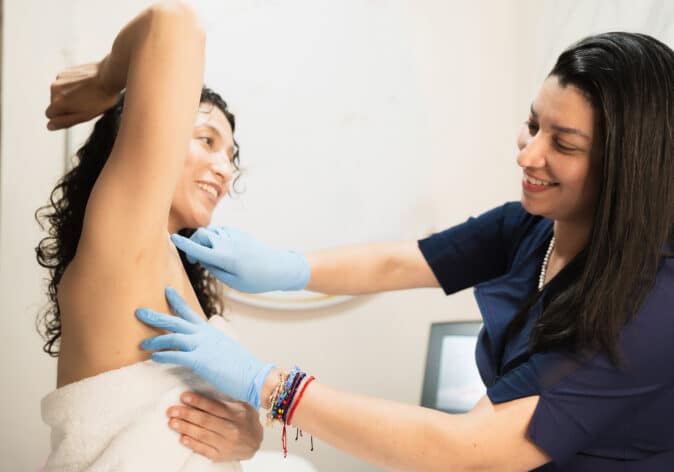The optimal timing of aromatase inhibitors around chemotherapy in the treatment of women with oestrogen receptor-positive, HER2-negative early breast cancer has previously been unknown.
Lead author of the recent ELIMINATE study, Associate Professor Nick Murray said that for the past 30 years chemotherapy and hormonal therapy – to reduce the amount of oestrogen – have generally been given sequentially in these women. This means the hormonal therapy was started later than it would be if given concurrently.
“Clinicians didn’t think about whether you should give them together or separately until there was one tamoxifen trial in the US in the 1990s in which it was given concurrently with chemotherapy,” he said. “In that trial, it was reported that the outcome for those women was worse. That influenced practice for many, many years. But when all the data for all trials [with tamoxifen] were put together it wasn’t shown to be worse, and there was a possibility it was actually better.”
Aromatase inhibitors, which work in a different way to tamoxifen, by lowering oestrogen concentrations in the body rather than blocking its action, were then developed. “Therapy with aromatase inhibitors had never been studied in the same way,” said Dr Murray, who is a medical oncologist at the Royal Adelaide Hospital Cancer Centre. “Should you give it at the same time as chemotherapy? We just didn’t know.”
To help answer this question, the ELIMINATE randomised trial was developed, in which 122 women from more than 20 cancer centres across Australia and New Zealand were evaluated. The women all had clinical stage 2 or 3 oestrogen receptor-positive, HER2-negative breast cancer, with an average tumour size of 45mm. Treatment involved surgery after chemotherapy (and endocrine therapy for 2/3 of the participants) had been given to reduce the size of their tumours.
The results showed there was no significant difference in shrinkage of the tumour by providing chemotherapy and aromatase inhibitors concurrently as opposed to sequentially. The standard of care remains chemotherapy for those whose tumour characteristics warrant it, followed by 5 or more years of endocrine therapy.
“It would have been nice if we’d seen a positive reaction to providing the treatments concurrently,” Associate Professor Murray says. “We certainly didn’t see any negative effects. But we’ve answered the question, cleared up an uncertainty and removed the need to do a much more expensive trial.”
A/Prof Murray says further work is being done to determine if there are some sub-groups of women for whom giving the treatments concurrently could be beneficial.
Publication:
- Murray, P. Francis, N. Zdenkowski, N. Wilcken, F. Boyle, V. Gebski, S.M. Tiley, L. Gilham, S-J. Dawson, S. Loi, A.D. Redfern, J. Lombard, A. Spillane, C. Shadbolt, H. Badger. Randomized trial of neoadjuvant chemotherapy with or without concurrent aromatase inhibitor therapy to downstage ER+ve breast cancer: Breast Cancer Trials Group ANZ 1401 ELIMINATE trial. Annals of Oncology. 2022, 33: S3. https://doi.org/10.1016/j.annonc.2022.03.107
Support Us
Help us to change lives through breast cancer clinical trials research




